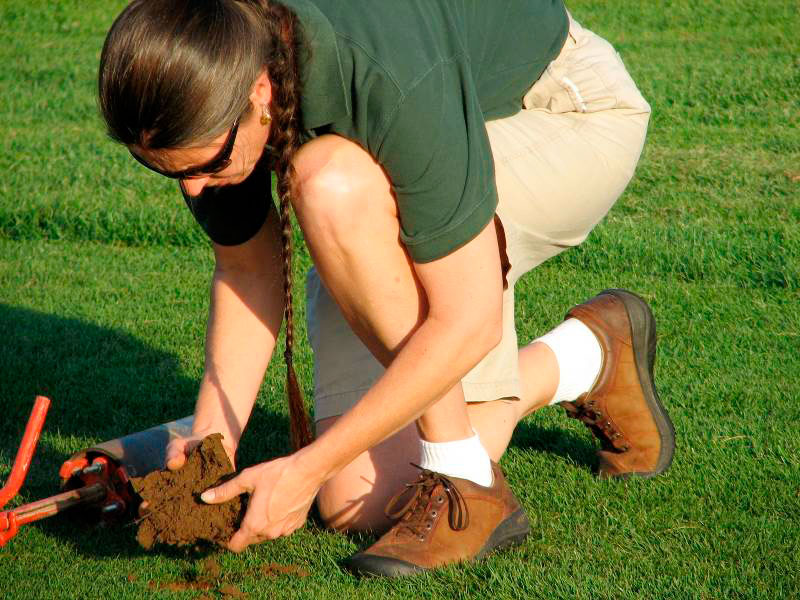Although IPM permeates all aspects of course management and planning, it can be thought of in seven steps. The steps are sequential, but in practice all are ongoing and overlapping:
Step 1 – Planning
Step 2 – Identification and Monitoring
Step 3 – Course Management
Step 4 – Evaluation & Analysis
Step 5 – Intervention
Step 6 – Record Keeping
Step 7 – Communication
Step 1: Planning
Many environmental stresses that result in higher pest incidence and severity can be avoided through careful course design and planning, however, most superintendents are faced with managing an existing course. Pest problems and inputs can still be minimized through course modifications and preventive cultural practices. Read more
Step 2: Identification and Monitoring
Every course should have a plan for formal pest monitoring or “scouting” of all areas. For example, the frequency should be daily on putting greens, at least weekly on tees and fairways and bi-weekly on roughs. Read more
Step 3: Course Management
Almost every aspect of golf course management affects the likelihood and severity of pest problems. Although practices required for playability sometimes supersede the optimal IPM choice, manipulating cultural practices should be a key part of an IPM approach. For example, low mowing heights used to obtain high ball roll distances on putting greens can be modified by mowing and rolling greens on alternate days to lessen turf stress while still providing the same ball roll. Similarly, frequent topdressing buries the crown, effectively giving the plant a higher height of cut, while still providing good ball roll. Ultimately, stress-reducing cultural practices such as these decrease the incidence of disease and reduce weeds, which in turn reduces reliance on chemical pesticides.
Step 4: Evaluation and Analysis
IPM is a knowledge-intensive decision-making system, requiring evaluation of incoming information, such as:
- scouting results
- weather forecasts
- golf course calendar events
- previous pest history and course hot spots
- past pest management success (for example, timing and efficacy of cultural practices, biological controls, and pesticides)
- new information from university research and the experience of peers
By constantly integrating these sources of information, the superintendent can best decide if a pest threat exists, and when, whether, and how it can be avoided or controlled. For some pests, action thresholds will trigger an intervention reaction (Step 5) in season. For others, cultural management strategies may be intensified.
Step 5: Intervention
Intervention is the action taken when pest levels reach the threshold known to cause unacceptable damage or turf loss. In some cases, these thresholds have been determined scientifically, while in other instances these thresholds are based on site-specific experience. Read more
Step 6: Record Keeping
Documentation is key to connecting the elements of an IPM program and increasing its value. In order to be effective, IPM record keeping should exceed legal requirements. Read more
Step 7: Communication
Good communication within the maintenance team is an essential aspect of IPM. Regardless of who monitors pest issues, all staff should be aware of pest problems and management activities and should be encouraged to report observed and potential problems. Furthermore, IPM training should be provided to as many staff as possible. Read more



